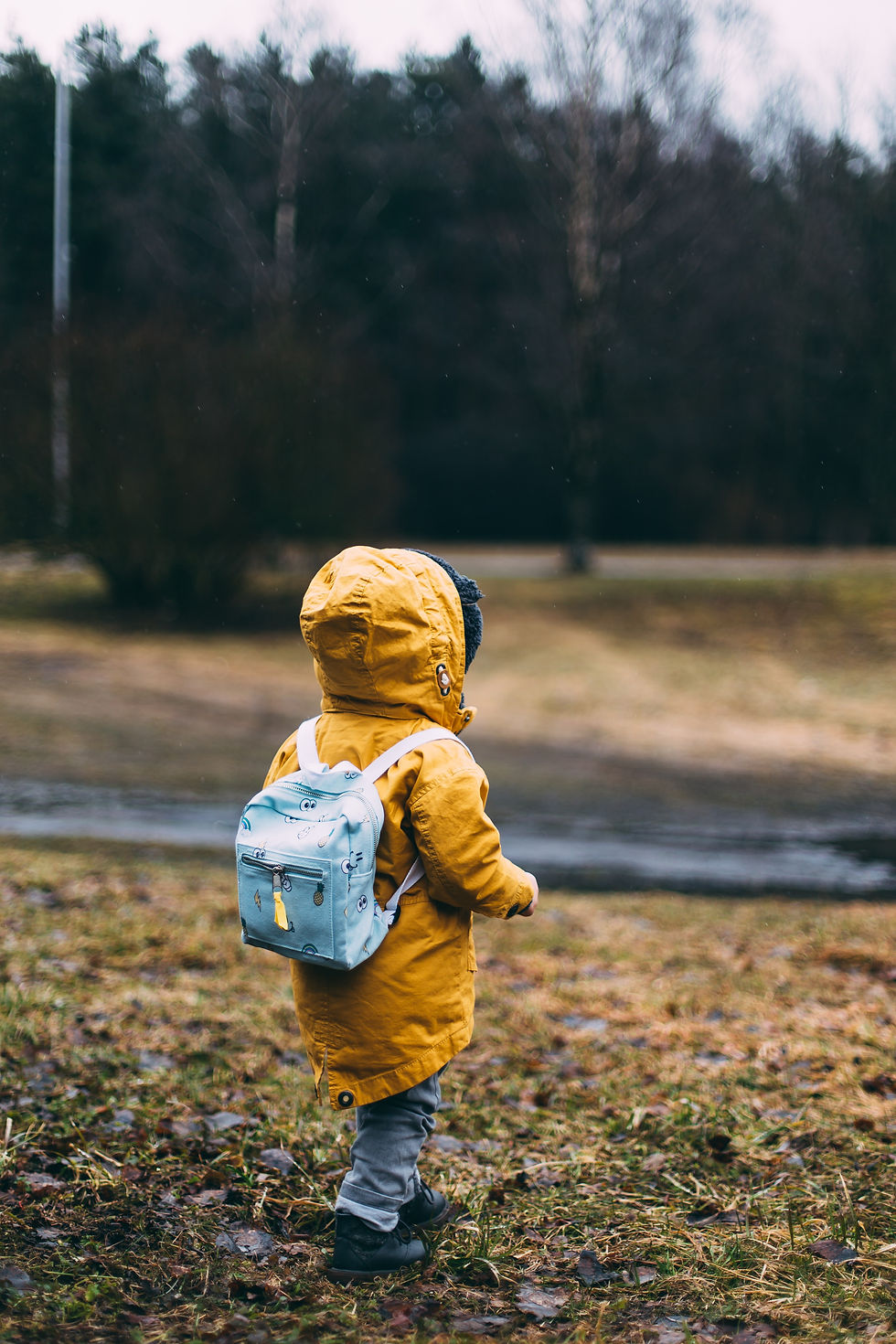Taking Walks With Young Children
- Laura Fritz

- Apr 4, 2023
- 3 min read
Over the last month we have experienced everything from beautiful, warm, sunny days to snow flurries and chillier temperatures to mud and rain. Through the long transition of a Minnesota winter to a Minnesota summer that we call “spring,” it can be difficult to find ways to give children time outside that are engaging and provide enough physical movement without ruining all their clothes! Maneuvering in bulky winter gear to climb up to the slide on the playground or manipulating a shovel and bucket to dig in the sandbox while wearing mittens gets frustrating, especially for toddlers. An alternative option is to go on a walk around your or a nearby block to get some exercise, see what seasonal changes are happening, and check out the general goings on in the neighborhood.

Preparing for Your Walk
Pick a point in your day when you can be really present and have the time to go at your child’s pace. Ensure everyone is fed, rested, and ready for an adventure! This is a great opportunity to encourage your child to put on outside shoes and other temperature-appropriate outerwear independently, depending on their skill level. Another recommendation is to leave the stroller at home, if your child is walking stably. The goal isn’t distance traveled, but exploration! Gauge your child’s stamina, but you could typically budget to be gone for about half an hour to start. And the length of time they can manage may change quickly with experience! You will very likely be surprised at how much ground they can cover when engaged in the process: deciding which direction to go, visiting favorite spots developed over time, and having conversations while you walk.
Points of Interest
You may wave to neighbors you meet while going through the hallway leading out of your apartment building. Perhaps people are working outside a house next door and you can stop to offer a greeting. Modeling friendliness and courtesy toward others for your child impacts their own interactions and goes a long way in creating community.
Often with young children much of the dialogue on a walk revolves around vehicles they see: city buses, dump trucks, mail vans, delivery trucks, and school buses may pass you along their routes. If possible, make your destination a local fire station - always a highlight! There may be an ambulance sitting outside waiting for the next call. In my experience, the EMTs will turn on their flashing lights for you. The pinnacle is getting to witness a fire truck returning to or leaving the station. Most children are delighted when the firefighters honk the loud horn!
Other stops might include a nearby hardware store, where the display of wheelbarrows, firewood, deck chairs, and grass seed spreaders are very enticing to touch. Or note the different items for sale at a garden center, which will continue to change and become more colorful as it gets warmer. You may want to pass by a friend’s house, or check out a nearby body of water. This is a great way to bring your child’s attention to wildlife and the changing of seasons. You could also regularly watch the progress of a new house being built. This brings up more vehicles and the names of tools as you try to identify the sounds you hear together. In all these scenarios the opportunities for building language vocabulary are endless!
Rules of the Road
There are of course many other things to notice, like airplanes overhead, birds singing, and the changing red and green of the traffic lights; a great system to adopt for when to walk (green light!) and when to stop your feet to wait for traffic or someone to pick up a dropped mitten or fix a shoe (red light!). You can comment on where it is safe to walk as a pedestrian and where the cars or other vehicles drive. There could be a bicyclist that rides by and you can note the rules on biking around town. I’ve had many interesting conversations with young children about the concept of an alley while walking around city blocks. Children are very capable of understanding limits on these excursions if you state them clearly and are consistent in their enforcement. For example, “We always hold hands when we cross the street.”

So Many Benefits!
Walks allow you to connect with the neighborhood in which you live (or where a family member, school, or place of work is located!) as well as give children opportunities to move for a long distance at their own pace. At this time of year children also get to practice balancing on uneven pavement, shuffling on icy patches, and watching for what is coming up ahead. Consider getting outside of your own yard at home and taking a walk to see what things you can discover along the way with your children!










Comments